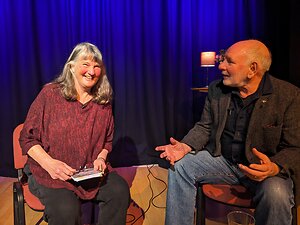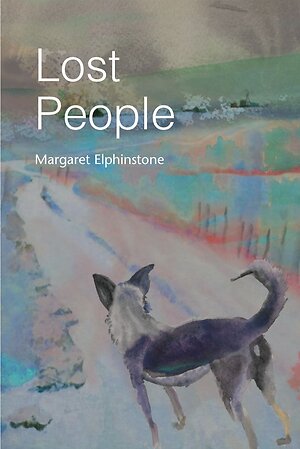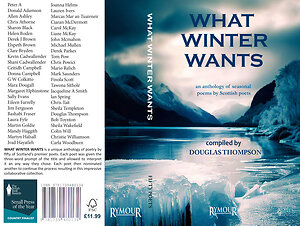“This was where Rachel was last seen….the bay was just as Alan had described it: a mile-long half moon of white sand."
Voyageurs
Map of Voyageur territory | Publication details | Reviews
Living in Michigan, in the middle of a continent, I was aware of land stretching away all round me. From the north shore of Lake Superior, there is - or used to be - wild land extending right up to the Polar Seas. I’ve flown over the Greenland ice cap, and over the tundra and pine forests of the far north. People take up little space; it is the effect of what they do that changes everything. In Michigan the sweet water seas, as they call their great lakes, are surrounded by an ocean of land. Europeans arrived here so recently; the oldest house in Mount Pleasant dates from 1845. The Ojibwa people who lived (and still live) in Michigan Territory, beyond the new settlers’ frontier, had been here for centuries before that. Living right in the palm of hand-shaped Michigan, I began thinking about land, and who belongs in it, and who imagines that they own it, and what we think we mean when we talk about frontiers.
Cliché or not, Voyageurs began with a dream. I dreamt about a woman in great distress, wrapped in a shawl, alone on a sandy beach. Later I recognised the beach as South Manitou Island, in Lake Michigan (pictured above), and the woman became Rachel, the original protagonist of Voyageurs. I began to write Rachel’s story. She was a young Quaker woman, travelling, as Quaker women often did, with another woman, to minister to the frontier peoples in Upper Canada. I was well into her story when I was interviewed by Alan McGillivray for the magazine Laverock. “Of course,” he said, “your novels are always about a young woman, displaced from her home and people, embarking on a dangerous journey into new territory and different cultures.” Of course? Until that moment I hadn’t noticed. I instantly determined not to do it again. Voyageurs would not be Rachel’s story. And so it became her brother’s.
Mark is a young Quaker, who reluctantly leaves his native Cumberland to search for his sister, who eloped with a fur trader and disappeared into Michigan territory. He is inadvertently caught up in the 1812 War between Canada and the United States, which makes it hard for him to adhere to the Quaker Peace Testimony. (Only after I’d written the book did I fully realise I was also addressing a crisis in my own time, as I began to write soon after the First Gulf War broke out.) I grew very fond of Mark; as he narrates his own story, I really had to become him as best I could. He often seems out of his depth in both love and war, in a strange country, but I think ultimately he does very well.
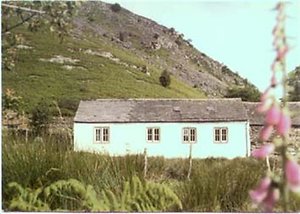
Mark comes from familiar territory: my childhood holidays were spent in Borrowdale, in the Lake District. All my fictional characters belong in places I know well. I walk where they walked, and I look through the present to the past that they inhabited, and imagine what the place was like for them. Mosedale Quaker Meeting House where Mark worshiped (right) is little changed from his time. The research, in libraries and archives and on location, is all part of the adventure.
After my two Viking novels, the wealth of primary sources available in the C19 was a new experience. All but a few of the minor characters in Voyageurs were real people. Only the main characters are my invention. For Mark’s background, I had all the Quaker archives, Minutes of Meetings, letters and other documents, available in the archive at Carlisle Castle. For his brother-in-law Alan, who emigrates to Canada from the shores of Lochcarron in N.W. Scotland, I found the original estate deeds for Lochcarron, the lists of emigrant ships and their passengers, and lists of individuals who worked with Alan in the North West Company in Montreal. I followed Mark’s footsteps from Cumberland to Quebec, and across Lower Canada to Yonge Street, Newmarket, to the Sault and across to Mackinac Island, then far into Michigan Territory.
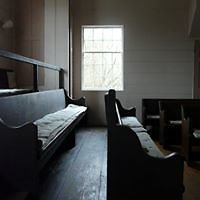
Everywhere I went I found local libraries and archives and helpful people. In particular, the Quaker Meetings at Yonge Street and Toronto gave me hospitality and access to fascinating archives. The archivist at Yonge Street was in fact a direct descendent of Doan, the Clerk whom Mark met in 1811. I sat on a bench in the Meeting House (left) and looked out of the same window as Mark.
Other minor characters along the way, like Ermatinger and the Johnson family at the Sault, or Madame la Framboise at Mackinac, emerged from unpublished archive material in each place. I encountered Madame La Framboise for the first time when I found myself staying in her house, now the Harbour View Inn, and discovered that she was an Ojibwa woman, who, after her French fur trader husband was murdered, became a successful fur trader in her own right. A forceful woman, she at once found her way into Mark’s story. I visited Mackinac often, and a friend took me across to stay on Bois Blanc Island, where Mark meets Loic and his family. There I was introduced to a local historian, who gave me vital details about Loic's island.
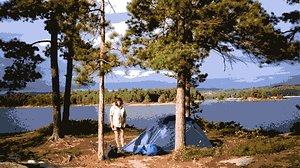
I went back to Central Michigan University for a further semester to write the novel. I made forays into Canada, to follow Mark’s journey, canoeing as much of it as I could. We paddled along the Ottawa in a replica canot du nord (as illustrated in the Frances Anne Hopkins picture below) - but luckily without two tons of beaver pelts on board - and camped on Gibralter Island (right) where Mark and the voyageurs stopped on their journey into the interior.
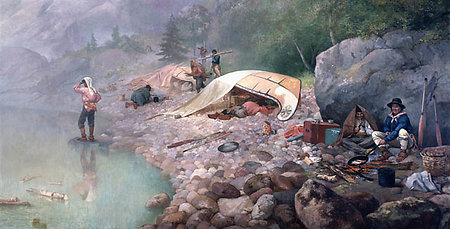
Returning to Mount Pleasant, I was welcomed back to the English Department and to Pine River Friends’ Meeting. Ojibwa former students of mine arranged for me to attend lectures in the Department of Native American Studies. My friend Jim, another tribal member, received permission for me to join a mentoring programme in which young Ojibwa people learn about their own culture. A colleague provided the few phrases in Ojibwa which appear in the novel.
I was concerned about representing a culture so unlike my own, on to which so many stereotypes have been projected. I asked for help at the Ziibiwiing Cultural Centre, where Charmaine Benz read my manuscript, and made some surprising comments. I had to think further about mis-representation, while sticking firmly to Mark’s point of view. Charmaine and her colleagues encouraged me to persist, “So long as you tell the truth,” one said. A tall order, that, for any writer. I did my best.
appears by courtesy of the U.S. National Park Service
Map of Voyageur territory
A large part of the novel Voyageurs is set in North America at the time of the 1812 war. I found this map, made in 1805, in the Michigan archives in East Lansing. It is the map Mark and Alan use on their journey in to Michigan Territory.
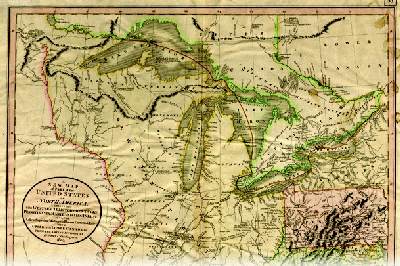

To view this map in more detail click on it and key 'Command' and '+'
or click this icon for a simplified version. >
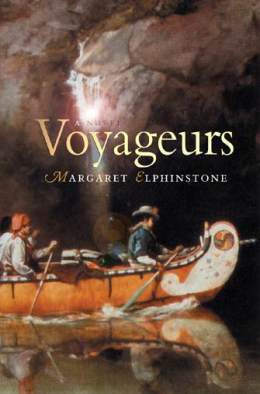
Publication Details
Voyageurs (Edinburgh: Canongate. 2003, 2nd ed. 2004) 466pp.
ISBN 1 84195 429 2
Buy Voyageurs
Published in Canada (Toronto: McArthur and Co. 2003, 2nd ed. 2004)
Published in the USA (New York: Canongate US, 2004)
Translated into German as Stromäufwarts by Marion Balkenhol (Germany: Ullstein List Verlag, 2004)
Translated into Czech by Tamara Vosecka as Plavci (Prague: Baronet, 2004)
Voyageurs reviewed
Christian Science Monitor (USA)
"What's particularly wonderful about Voyageurs is the chance to linger in the company of someone struggling with his faith, his responsibilities to others and to God ....a long book is always a risky trek into uncharted territory but this is a guide worth following."
Ron Charles
Kirkus Reviews (New York)
"The illusion of a past time is beautifully sustained by Elphinstone's detailed recreations of indigenous (mostly native American and Canadian) period detail and by her narrator's reserved and wondering voice..."
The Friend (Independent Quaker journal - London)
"...an extraordinary story told at various levels. History, travel, adventure, love story flow together in a seemingly effortless and natural manner so that all the research and meticulous attention to detail are woven into an authentic whole without being obtrusive. "
The Globe and Mail (Toronto)
"Elphinstone has embraced our history and landscape with gusto, but allows neither to overshadow the human story... Perhaps the novel's greatest achievement is its depiction of a young man's interior voyage away from the stark hues of dogma into the moral ambiguities he encounters at every bend in the river. "
Marianne Ackerman
The Times
"What stands out is Elphinstone's sense of time and place... There are also marvellous passages describing the Canadian wilderness, and the narrative engages our empathy with the indigenous Indians. But, more to the point, does Mark find his long-lost sister? That would be telling."
Ross Leckie
Sunday Herald (Glasgow)
"Elphinstone has done her research. Her history is bang up to date... Mark Greenhow is an unlikely - but deserving - hero. There is a quiet, dogged courage about him that is very satisfying. I have to say it's a long time since I've read a novel with more pleasure and interest. Voyageurs is a strong story, very well told; a tale set against the background of an almost-forgotten war when British troops (under a Scots commander) tramped into Washington and burned down the White House... Voyageurs is the kind of fiction we'll be reading long after the pretentious dross that makes the Booker prize list has been forgotten."
George Rosie
The Scotsman (Edinburgh)
"This terrific read is almost 500 pages long ...[It] is a fine free-standing tale of brotherly love... The tone of the preface ...stands in stark contrast to the sinous, slip streamed prose that describes the action, that carries the tale and illuminates its dark interior world, a gripping story of human courage, cultural ignorance, and deep religious faith in a time of turbulence, set in British colonial Canada at the start of the 1800s."
Tom Adair
The Independent (London)
"Elphinstone brings the landscapes and peoples of 1800s Canada back to thrilling life in her pacy, colourful and intelligent epic: the finest trip along these rivers since Brian Moore's Black Robe."
Boyd Tonkin
The Sun Times (Owen Sound)
"Elphinstone has created in Voyageurs the epic novel that Canada's fur trade has always deserved.... A graceful writer, Elphinstone creates a host of vivid characters including some real life participants in the fur trade.... Suspenseful and hugely enjoyable, Voyageurs is a great Great Lakes read."
Andrew Armitage

